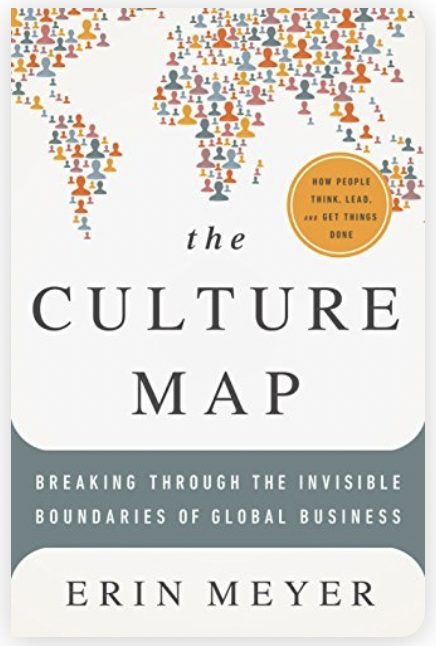Earlier this week, I wrote about "Leading Across Cultures: What 16 Years of Global PMO Leadership Taught Me About Cultural Intelligence." The response was overwhelming—so many of you shared your own stories of navigating the complexities of multinational teams. Today, I want to go deeper into perhaps the most critical aspect of global leadership: building emotional safety across borders.
"How's that Sydney-Frankfurt integration coming along?" a colleague asked during our quarterly leadership meetup.
I smiled. "It's been... educational."
Three months into leading my second truly global program spanning three continents in my previous role, I was facing challenges that no project management methodology had prepared me for. My Australian team had already started implementation while my German colleagues were methodically working through requirements documentation. Both approaches had merit, yet friction was building.
Does this scenario sound familiar?
The Business Case for Emotional Safety in Cross-Cultural Teams
During a pivotal conversation with my mentor, he observed something I hadn't fully articulated: "Notice how your highest-performing teams aren't necessarily the ones with the most advanced technical skills?"
He was right. The teams consistently delivering value weren't always the most experienced—they were the ones where people spoke candidly, acknowledged uncertainty, and collaborated without defensive posturing.
"Emotional safety isn't just a cultural nicety," He explained. "It's a performance multiplier."
The data supports this perspective. Teams with strong psychological safety:
- Are 21 times more likely to demonstrate innovative behaviors (WorldMetrics)
- Experience approximately 25% less burnout
- Report significantly higher collaboration effectiveness
However, what became increasingly clear was that building this foundation of trust across different cultural contexts required a more nuanced approach than I had initially anticipated.
Understanding Cross-Cultural Communication Barriers in Remote Teams
I recall my early frustration during video conferences with our teams in Germany.
"I can never accurately gauge their level of agreement," I shared with a mentor who had extensive experience in the region. "They seem to acknowledge the approach during meetings, but implementation reveals misalignments."
He nodded. "Meanwhile, your Australian colleagues probably voice concerns immediately, sometimes before you've fully outlined the proposal."
Precisely. What registered as clarity and efficiency in one cultural context felt like confrontation in another. What appeared as consensus was often polite reservation masking substantial concerns.
I had been applying a uniform leadership approach across fundamentally different cultural contexts, and the results were predictably suboptimal.
The Hidden Costs of Poor Psychological Safety in Multinational Teams
The impact of these cultural differences manifested in ways I hadn't anticipated:
- "I've been regularly extending my workday until midnight for these coordination calls," a Melbourne-based developer eventually confided. "The meeting schedule consistently prioritizes headquarters' time zones. It's unsustainable, but I hesitated to raise concerns."
- A junior engineer in Frankfurt revealed: "I identified the security vulnerability several weeks ago, but in my previous professional environment, questioning senior decisions was discouraged."
- Perhaps most concerning was the resignation letter from one of our highest-performing Australian project managers: "I'm increasingly perceived as 'overly direct' when I'm simply trying to drive efficient problem resolution."
In each scenario, the core issue wasn't competence or commitment—it was that team members across different regions experienced vastly different levels of psychological safety to contribute authentically.
Strategies for Enhancing Psychological Safety in Cross-Cultural Leadership PMO
After considerable reflection and consultation with regional leaders, we implemented several approaches that demonstrably improved collaboration and inclusion:
1. Make Cultural Differences Explicit and Valuable in Multicultural PMOs
"Could you help me understand how decisions typically evolve in your regional context?" became a standard question in my conversations.
We restructured our project kickoffs to include each location sharing:
- Their preferred feedback mechanisms
- How constructive disagreement typically manifests in their culture
- Expectations regarding participation and contribution in meetings
"I previously interpreted our German colleagues' documentation requirements as unnecessary bureaucracy," an Australian team lead acknowledged during one of these sessions. "I now recognize they're proactively mitigating risks we hadn't fully considered."
2. Establish Clear Communication Protocols in Remote and Distributed Teams
We developed practical communication guidelines that bridged different cultural norms:
- Encourage the use of framing phrases: "My understanding is..." or "I'd appreciate more context on..."
- Rotate meeting schedules quarterly to avoid time-zone bias
- Mix synchronous and asynchronous channels to support different expression styles
These linguistic and structural changes led to noticeable improvements in clarity and mutual respect.
3. Demonstrate Authentic Leadership Vulnerability in Global Project Delivery
This approach represented the most significant personal challenge for me, yet delivered disproportionate impact.
During a particularly challenging project review, I acknowledged: "I recognize there may be gaps in my approach. This is my first experience leading teams across these specific regions, and I would value your guidance on how I can provide more effective support."
"When you acknowledged needing our perspective on effective collaboration with our team," our technical lead in Munich later shared, "it signaled genuine partnership rather than hierarchical direction."
4. Balance Global PMO Structure with Local Flexibility
We focused on:
- Defining consistent outcome requirements
- Providing latitude in regional approaches
- Decentralizing appropriate decision authority
- Documenting when standardization was necessary vs. when flexibility was beneficial
"It's essentially establishing a common destination while accommodating different journeys," one regional director shared.
5. Foster Human Connection to Strengthen Psychological Safety in Global Teams
Despite initial skepticism, we introduced 30-minute, agenda-free virtual conversations between randomly paired colleagues across countries.
"I would have hesitated to directly address my concerns previously," one team member reflected. "Our informal conversation revealed a much more approachable colleague than I had assumed."
These human moments became the social glue for stronger collaboration under pressure.
Leadership Takeaways for Building Emotional Safety Across Cultures
If these scenarios resonate with your experience leading distributed teams, consider these takeaways:
- Emotional safety is not about comfort; it's about performance.
- Cultural alignment is a leadership responsibility, not an HR task.
- Uniformity doesn't equal unity—mutual respect does.
- Leadership vulnerability fosters team strength.
- Investing in connection yields returns in execution.
When your cross-border initiatives encounter resistance, ask:
- Do all team members feel empowered to contribute authentically?
- Are we defaulting to HQ norms over inclusive practices?
- Have we built trust before expecting velocity?
Addressing emotional safety often resolves what appear to be technical or delivery issues.
Want to build psychologically safe, high-performing global teams? Explore our programs at www.etherionconsulting.com or reach out for a tailored cultural alignment strategy.
Thanks for reading Bytes from Etherion! This post is public so feel free to share it.
Helpful resources to read:
Books to read:


The global teams that thrive aren't the ones that eliminate cultural differences—they're the ones that turn those differences into strategic advantages.
I'd love to hear your experiences. What challenges have you faced leading teams across borders? What approaches have worked for you?
Drop your thoughts below, or reach out if you'd like to dive deeper into building psychological safety in your global teams. Sometimes the most valuable insights come from comparing notes with fellow travelers.






